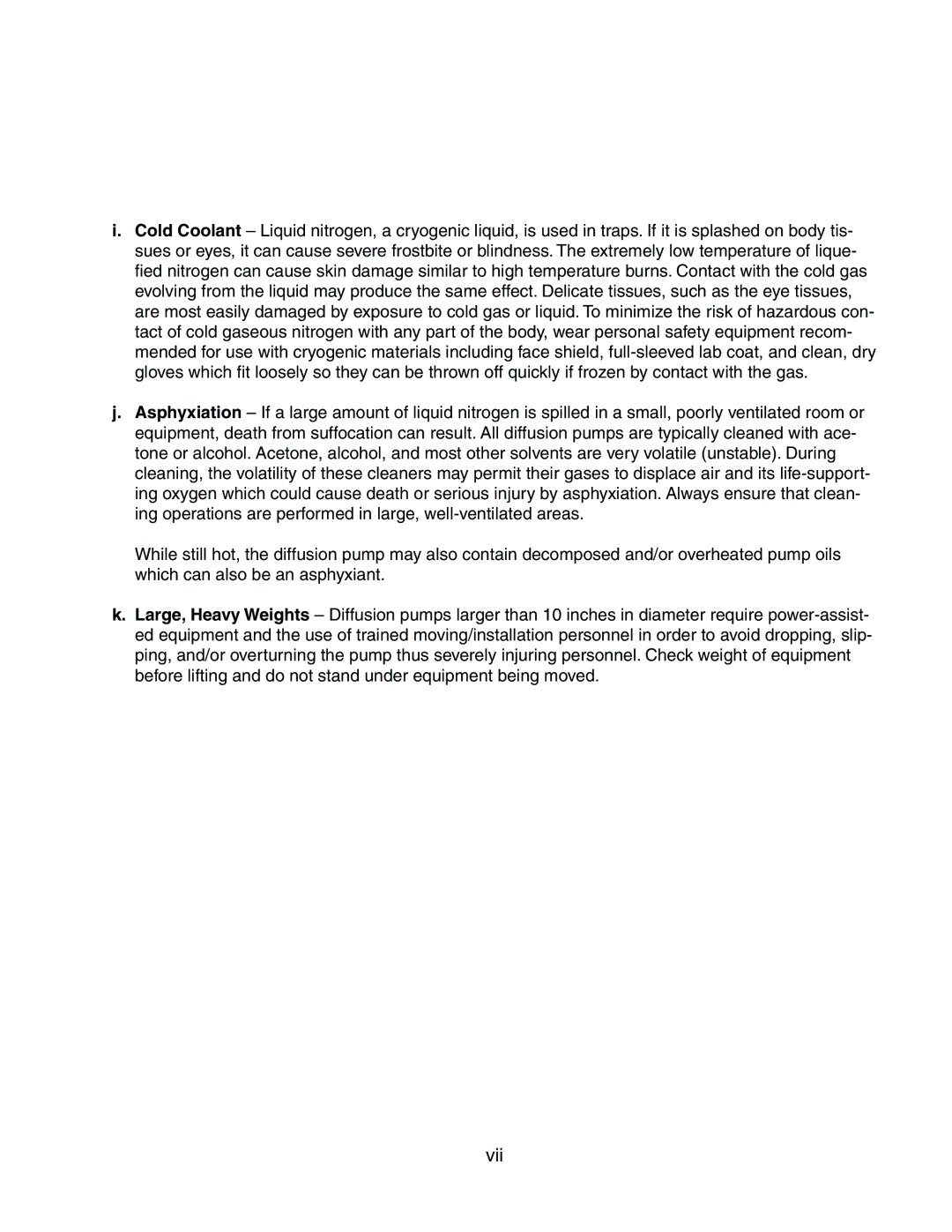i.Cold Coolant – Liquid nitrogen, a cryogenic liquid, is used in traps. If it is splashed on body tis- sues or eyes, it can cause severe frostbite or blindness. The extremely low temperature of lique- fied nitrogen can cause skin damage similar to high temperature burns. Contact with the cold gas evolving from the liquid may produce the same effect. Delicate tissues, such as the eye tissues, are most easily damaged by exposure to cold gas or liquid. To minimize the risk of hazardous con- tact of cold gaseous nitrogen with any part of the body, wear personal safety equipment recom- mended for use with cryogenic materials including face shield,
j.Asphyxiation – If a large amount of liquid nitrogen is spilled in a small, poorly ventilated room or equipment, death from suffocation can result. All diffusion pumps are typically cleaned with ace- tone or alcohol. Acetone, alcohol, and most other solvents are very volatile (unstable). During cleaning, the volatility of these cleaners may permit their gases to displace air and its
j.While still hot, the diffusion pump may also contain decomposed and/or overheated pump oils which can also be an asphyxiant.
k.Large, Heavy Weights – Diffusion pumps larger than 10 inches in diameter require
